Exploring the Mystical Enclaves: Cave Temples of Mumbai
Nestled amidst the bustling metropolis of Mumbai lies a hidden treasure trove of ancient art and spirituality - the cave temples of Mumbai. These marvels date back centuries and showcase the rich heritage and cultural significance of the region. Carved out of solid rock, these cave temples offer an intriguing glimpse into the past, providing a serene escape from the urban chaos. In this article, we embark on a journey to uncover the history, architecture, and spiritual importance of these unique cave temples in Mumbai.
1. The Kanheri Caves:
Located within the Sanjay Gandhi National Park in Borivali, the Kanheri Caves are the most well-known and frequently visited among all the cave temples in Mumbai. Boasting a history spanning over a millennium, these caves date back to the 1st century BCE and were primarily used as a place of Buddhist worship and learning. The complex comprises more than a hundred caves, each serving as viharas (monasteries) and chaityas (prayer halls) with intricately carved stupas, sculptures, and inscriptions. The Kanheri Caves offer a glimpse into the life of ancient Buddhist monks and provide a serene environment for introspection and meditation.
2. Elephanta Caves:
Located on Elephanta Island, a short ferry ride away from Mumbai's Gateway of India, the Elephanta Caves are a UNESCO World Heritage Site renowned for their rock-cut cave temples. These caves date back to the 5th to 8th centuries CE and are dedicated to Lord Shiva. The main cave temple, also known as the Shiva Cave, features a magnificent 20-foot-tall sculpted Trimurti (three-faced representation of Lord Shiva) and a beautiful Shivalinga. The intricate carvings depicting mythological tales and scenes from Hindu scriptures add to the allure of these ancient cave temples.
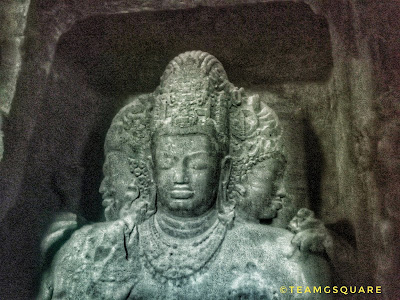 |
| Elephanta Caves, Mumbai |
3. Jogeshwari Caves:
Situated in the suburb of Jogeshwari, the Jogeshwari Caves are another set of rock-cut caves dating back to the 6th century. These caves are devoted to the Hindu god Shiva and his consort, Devi Jogeshwari. The architecture of the caves is reminiscent of the classical Gupta style, featuring exquisite carvings of gods and goddesses, as well as intricate sculptures of apsaras (celestial nymphs) and other mythological beings.
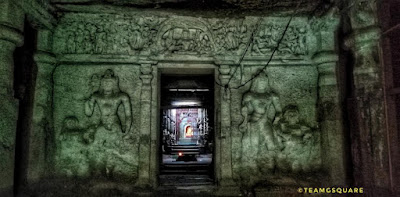 |
| Jogeshwari Caves, Mumbai |
4. Mahakali Caves:
Located in Andheri, the Mahakali Caves are a group of 19 rock-cut caves hewn out of basalt rock. These caves date back to the 1st century BCE and 6th century CE, and they are dedicated to Lord Shiva and other deities. The most significant cave among them houses a large Mahakali statue, hence the name of the caves. The Mahakali Caves provide an interesting glimpse into the amalgamation of Buddhist and Hindu architectural styles, with chaityas and viharas alongside Hindu deities.
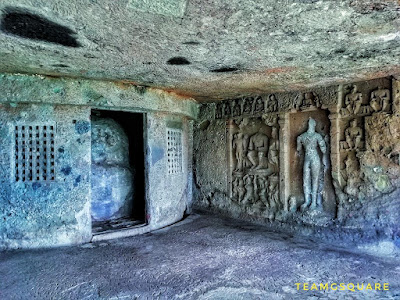 |
| Mahakali Caves, Mumbai |
5. Mandapeshwar Caves:
Nestled in the suburb of Borivali, the Mandapeshwar Caves are dedicated to Lord Shiva and were constructed during the 8th century. These caves represent a blend of Buddhist and Hindu architectural styles, with the main cave featuring a Shiva Linga and intricate carvings of Nandi (the bull) and other deities. The site is known for its serene ambiance and historical significance.
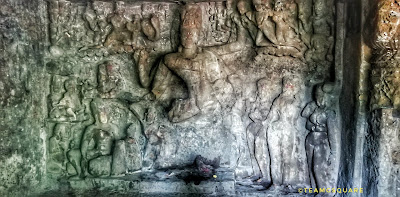 |
| Mandapeshwar Caves, Mumbai, Maharastra |
Traveling to Mumbai:
Mumbai, being a major cosmopolitan city, is well-connected by air, rail, and road, making it easily accessible for travelers from all corners of the world. The city has two main airports: Chhatrapati Shivaji Maharaj International Airport (CSIA) and the domestic airport (Terminal 1). Numerous international and domestic flights operate regularly, making it convenient for tourists to reach Mumbai.
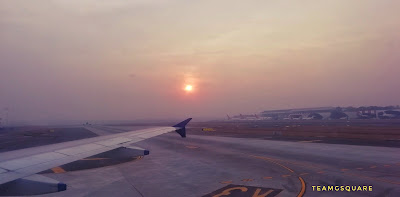 |
| Mumbai Domestic Airport |
If you prefer traveling by train, Mumbai is well-connected to major cities across India through its extensive railway network. The Chhatrapati Shivaji Terminus (CST) and Mumbai Central are the two main railway stations serving as entry points to the city.
Stay Options:
Mumbai offers a wide range of stay options to cater to the varying needs and budgets of travelers. From luxurious five-star hotels to comfortable budget accommodations, the city has it all. Here are some popular stay options:
Luxury Hotels: Mumbai boasts numerous luxury hotels offering world-class amenities, impeccable service, and stunning views. These hotels are usually located in posh areas like Marine Drive, Juhu, and Bandra. Some renowned luxury hotels include The Taj Mahal Palace, The Oberoi Mumbai, and The St. Regis Mumbai.
Boutique Hotels: For travelers seeking a unique and personalized experience, boutique hotels in areas like Colaba, Khar, and Fort are a great option. These hotels often reflect the local culture and offer a more intimate ambiance.
Business Hotels: If you are in Mumbai for work-related purposes, there are several business hotels near major commercial areas and business districts. These hotels cater to the needs of business travelers with facilities like conference rooms and business centers.
Budget Hotels and Hostels: Travelers on a budget can find several affordable hotels and hostels in areas like Andheri, Dadar, and Vile Parle. These options provide decent accommodation at pocket-friendly prices.
Food Options:
Mumbai is a food lover's paradise, offering a diverse range of culinary delights. From street food to fine dining restaurants, the city's food scene is sure to tantalize your taste buds. Here are some must-try food options in Mumbai:
Street Food: Don't miss the lip-smacking street food of Mumbai, including Vada Pav (spicy potato fritter in a bun), Pav Bhaji (a spicy mashed vegetable curry served with bread), Bhel Puri (a tangy and crunchy snack), and Pani Puri (hollow puris filled with flavored water and tamarind chutney).
Seafood: Being a coastal city, Mumbai is famous for its delectable seafood. Head to coastal areas like Juhu, Versova, or Colaba to savor fresh and mouthwatering seafood dishes.
Irani Cafes: Mumbai has a rich legacy of Irani Cafes, known for their old-world charm and delicious snacks. Try out Bun Maska (buttered bun) with Irani Chai (tea) for an authentic experience.
Maharashtrian Cuisine: Explore traditional Maharashtrian dishes like Puran Poli (sweet flatbread), Misal Pav (spicy curry with bread), and Batata Vada (spiced potato dumplings).
Global Cuisine: Mumbai also offers a wide range of international cuisines, from Italian and Chinese to Japanese and Middle Eastern. You can find upscale restaurants and eateries specializing in various global delicacies.
The cave temples of Mumbai stand as silent witnesses to the region's vibrant history, showcasing the coexistence of different religious and cultural traditions over the centuries. These architectural marvels not only exemplify the extraordinary craftsmanship of the ancient artisans but also offer a profound spiritual experience to the modern-day visitors. Exploring these cave temples is a journey into the past, where one can immerse themselves in the spiritual aura and appreciate the cultural heritage that Mumbai cherishes. As guardians of a bygone era, these cave temples remain an integral part of Mumbai's cultural identity, beckoning travelers and devotees alike to marvel at their beauty and grandeur.Traveling to Mumbai is a delightful experience, with a myriad of stay options catering to all preferences and budgets. While exploring the city, be sure to indulge in the diverse food options it has to offer, ranging from delectable street food to luxurious fine dining experiences. Whether you are an adventure seeker, a history enthusiast, or a food lover, Mumbai has something unique to offer to every traveler.
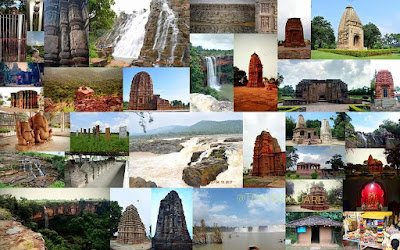
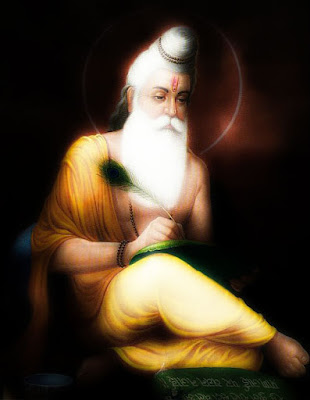
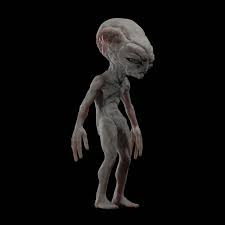
Comments
Post a Comment